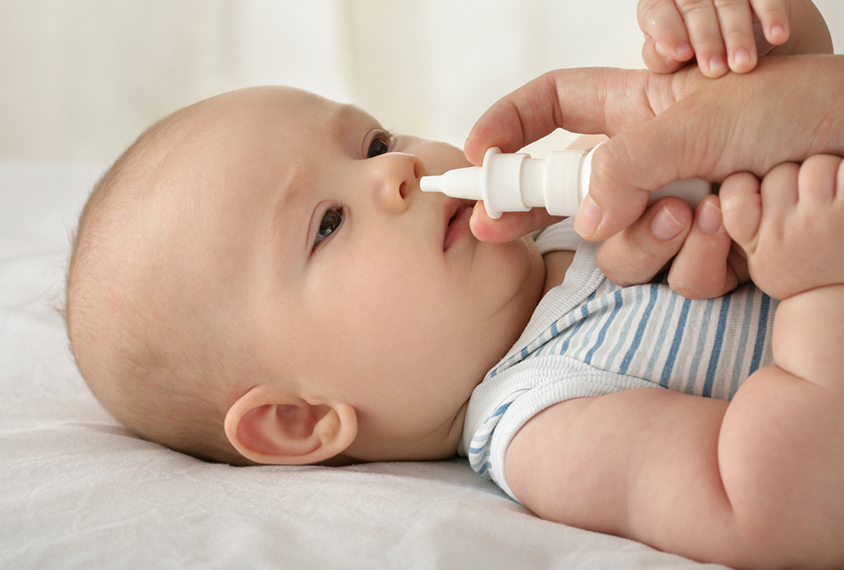A late-stage, high-profile clinical trial published last year tempered hopes of using oxytocin as a treatment for autistic children by showing that the social hormone works no better than a placebo at improving social behaviors. What’s more, blood oxytocin levels have no relationship with variants in or near the genes that encode oxytocin and its receptor, a subsequent analysis of participants from that study showed.
But oxytocin could still help people with Prader-Willi or Schaaf-Yang syndromes, both of which are linked to autism, and studying the hormone in these populations could yield valuable insights for autism researchers, argue Christian Schaaf, professor of human genetics, and Ferdinand Althammer, a postdoctoral researcher in Schaaf’s lab at the University of Heidelberg in Germany. About 25 percent of people with Prader-Willi syndrome have autism, as do up to 90 percent of people with Schaaf-Yang syndrome.
Schaaf and Althammer outlined a way forward for researching oxytocin therapies for people with these conditions in a review published in Translational Psychiatry in August. Spectrum spoke with them about broader lessons for the autism field.
This interview has been edited for length and clarity.
Spectrum: What makes you think oxytocin could be a suitable therapy for people with Prader-Willi and Schaaf-Yang syndromes?
Christian Schaaf: Schaaf-Yang Syndrome is caused by mutations in the MAGEL2 gene, which is also one of the genes missing in Prader-Willi syndrome. Studies investigating MAGEL2 knockout mouse models of Prader-Willi and Schaaf-Yang have shown changes in oxytocin signaling. Oxytocin can rescue some phenotypes of MAGEL2 knockout mice, such as feeding problems and altered social discrimination, and a landmark 2017 study showed that intranasal oxytocin can improve feeding and social skills in infants with Prader-Willi syndrome.
S: After last year’s clinical trial failure in autistic children, why continue pursuing oxytocin?
Ferdinand Althammer: Intranasal oxytocin treatment showed great promise in a large number of clinical studies in the past. However, dosage, setting, paradigms and patient cohorts were often drastically different, making a direct comparison impossible. While the failure of the recent phase 3 trial came as a great disappointment to most people, some researchers seemed less surprised. As Charles Ford and Larry Young pointed out in their commentary from February, context seems to be key for oxytocin-based therapy for autism. Thus, it seems possible that intranasal oxytocin might only be beneficial for a small number of people in very specific situations, but experts agree that this form of treatment should always be accompanied by behavioral therapy.
S: How do factors such as the trial participants’ ages affect the results?
FA: Oxytocin-based therapies appear to be more successful in younger people. It seems plausible that early treatment enables certain neuronal circuits to be reshaped or adjusted during brain development, which could potentially ameliorate some of the observed behavioral issues. However, when exactly this period starts or ends, and what brain plasticity mechanism underlies this potential phenomenon, needs to be further investigated.
S: What needs to change in research looking at oxytocin for autism?
CS: We need to abandon the idea of a ‘one-size-fits-all’ therapeutic intervention and should instead focus on tailored, patient-specific medicine. Autism is not a single condition, but a group of conditions that are genetically and otherwise extremely heterogeneous. Some people might simply not respond to intranasal oxytocin therapy at all. We need new correlative studies that take genetic etiology and genotype-phenotype relations into consideration. Also, we need to ask: When and how might people best respond to oxytocin therapy?
FA: In addition, we need basic research in order to better understand the underlying neuronal circuits that respond to intranasal oxytocin, as well as to study the role of oxytocin receptors in astrocytes, a long-overlooked cell type in oxytocin research.
S: What are your team’s next steps?
FA: We are investigating the role of astrocytic oxytocin receptors in MAGEL2 model mice to understand their contribution to oxytocinergic signaling in the brain. In addition, we plan to decipher the exact brain circuits: Which display the greatest mismatch of oxytocin fibers, oxytocin receptors and subsequent oxytocin release compared with wildtype animals?
We hypothesize that certain brain circuits, such as the hypothalamus-nucleus accumbens or the hypothalamus-lateral septum, are particularly susceptible to changes in oxytocin signaling and thus are promising target structures for ameliorating traits caused by a dysfunctional oxytocinergic system.
CS: In addition, the first-ever rodent model of Schaaf-Yang syndrome was recently generated: a rat with a truncating mutation of the MAGEL2 gene. This new rat will provide unprecedented data on the oxytocin system in Schaaf-Yang syndrome. The investigation of good animal models with good construct validity and good face validity will be important pieces in the puzzle of understanding the role of oxytocin in Prader-Willi and Schaaf-Yang syndromes.






